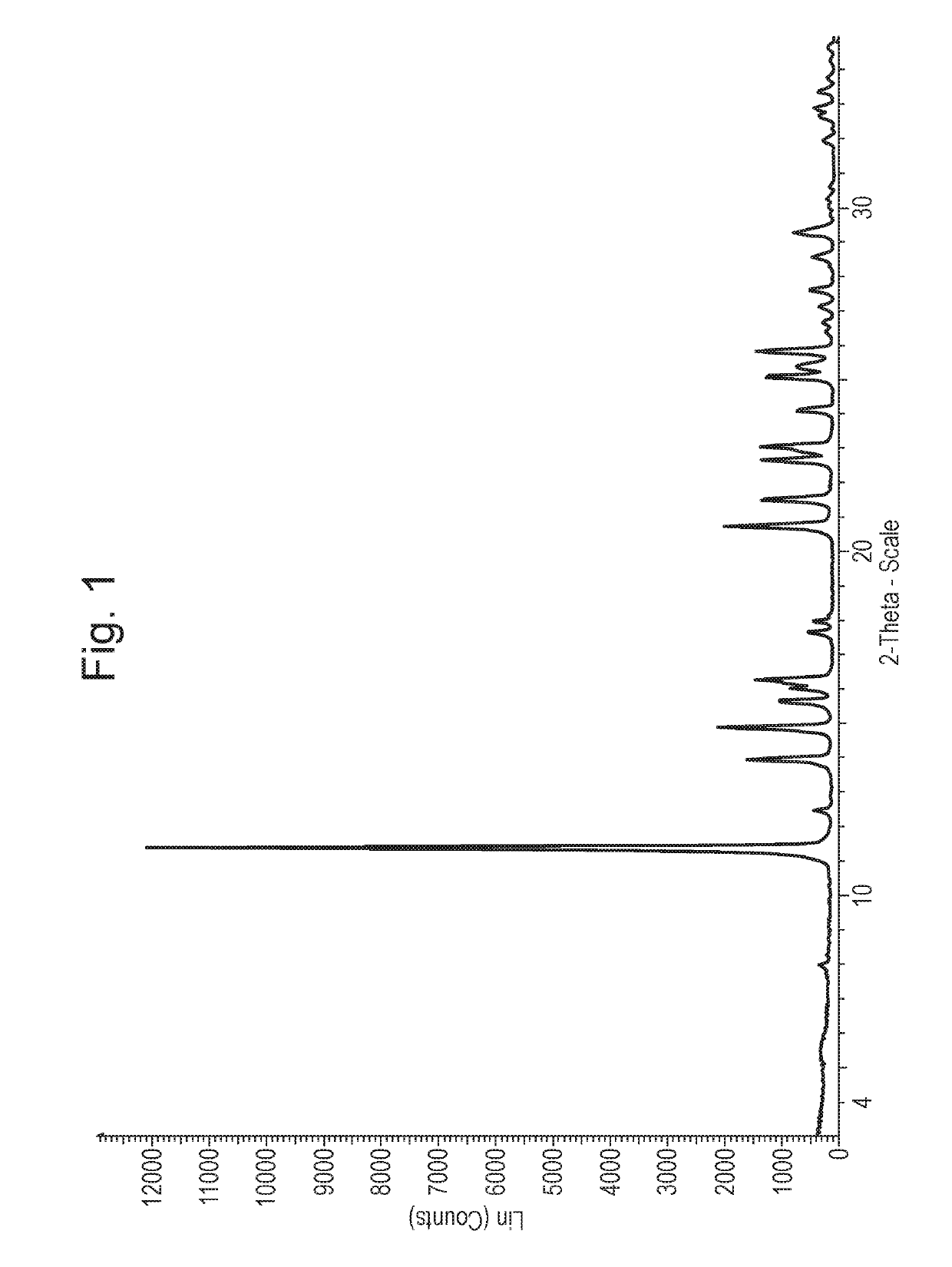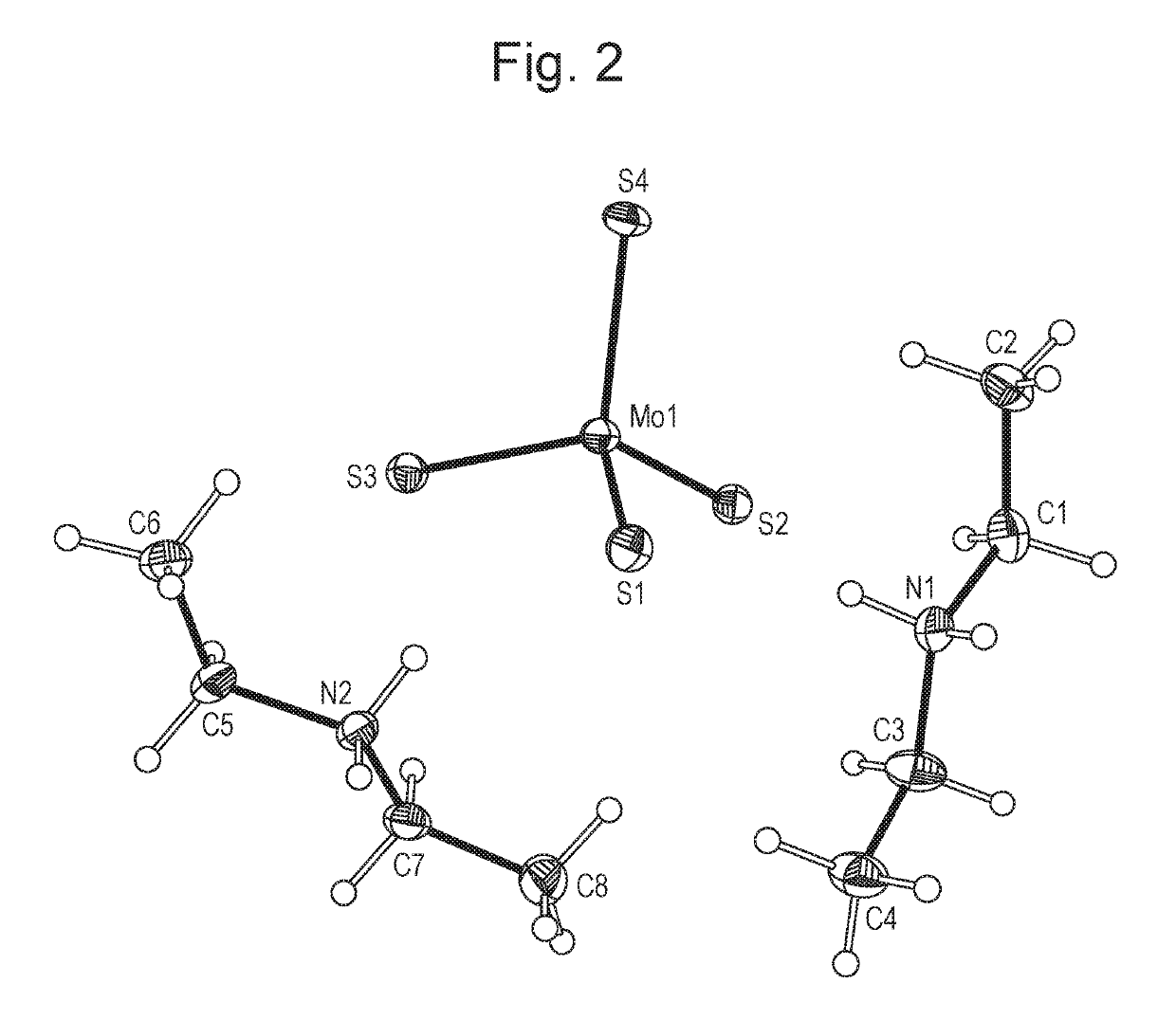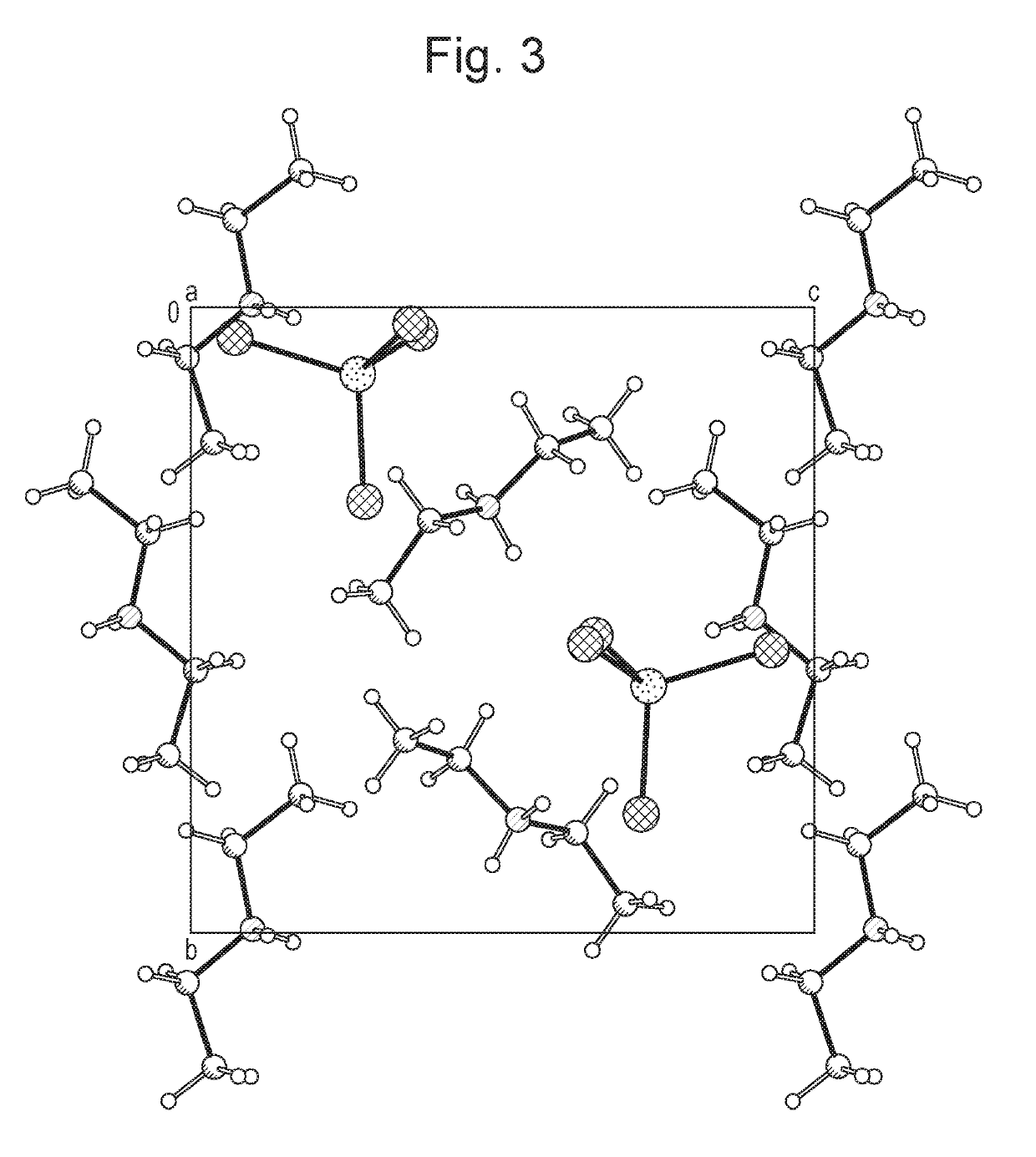Crystalline diethylamine tetrathiomolybdate and its pharmaceutical uses
a technology of crystalline diethylamine and tetrathiomolybdate, which is applied in the preparation of amino compounds, drug compositions, cardiovascular disorders, etc., can solve the problems of reducing the production of reactive oxygen species, limiting the activation of inflammatory cascades, and the amount of hydrogen sulfide released into the environment, so as to reduce the metabolism of an organ and reduce the amount of free sulfide. , the effect of rapid dissolution
- Summary
- Abstract
- Description
- Claims
- Application Information
AI Technical Summary
Benefits of technology
Problems solved by technology
Method used
Image
Examples
example 1
ne Diethylamine Tetrathiomolybdate Salt (DEA-TTM)
1.1 Preparation of Crystalline DEA-TTM
[0072]Ammonium tetrathiomolybdate (5 g) was weighed into a glass round bottomed flask under argon. Acetonitrile (25 ml) was added to the flask. The resulting slurry was stirred whilst a large excess of diethylamine was added at room temperature whilst maintaining the argon atmosphere. After 4 hours, argon was bubbled through the resulting solution to drive off the excess diethylamine and the majority of the acetonitrile. Once the solvent volume was reduced to ca. 5 ml, the product was then filtered under vacuum and the resulting red crystals washed with ether, prior to drying in a vacuum oven at 40° C. overnight.
1.2 XRPD Characterisation of Crystalline DEA-TTM
[0073]X-ray Powder Diffraction (XRPD) Characterisation: X-Ray Powder Diffraction patterns were collected on a PANalytical diffractometer using Cu Kα radiation (λ=1.5406 Å) (45 kV, 40 mA), θ-θ goniometer, focusing mirror, divergence slit (½″),...
example 2
Preparation of Other Crystalline Forms of Tetrathiomolybdate (Comparative)
[0087]Attempts to prepare other diethylamine (DEA) crystalline salts of tetrathiomolybdate were done using a slurry method as described below. The DEA salt former, the solvent, the method used and the results are described in Table 4. No other crystalline form was prepared.
[0088]Slurry method: A 1:1 molar ratio of ammonium tetrathiomolybdate and the target salt former totaling 200 mg were placed in a 4 ml glass vial. 2 ml of chosen solvent was added to the vial. The vial was agitated for 24 hours, after which the solids were filtered, dried under vacuum and examined by XRPD.
TABLE 4Salt FormerSolventMethodResultDiethylamineWater / SlurryNo change by XRPDAcetonitrileDiethylamineMethanolSlurryNo change by XRPDDiethylamineEthanolSlurryNo change by XRPD
example 3
issolution and Solubility Study
[0089]The in vitro dissolution and aqueous solubility behaviour of the diethylamine tetrathiomolybdate crystalline salt compared with that of the pure ammonium tetrathiomolybdate salt (purchased from Sigma Aldrich) was examined in distilled water. The dissolution experiment was carried out in triplicate on both the diethyl tetrathiomolybdate salt and the ammonium tetrathiomolybdate salt. The solubility of the pure ammonium tetrathiomolybdate salt in distilled water was found to be ca. 2 mg / ml and dissolution took over 1 hour. The solubility of the pure diethylamine tetrathiomolybdate salt in distilled water was found to be >100 mg / ml whereas dissolution was complete within a minute.
[0090]The in vitro dissolution and aqueous solubility behaviour at 25° C. was also investigated for the DEA-TTM salts synthesised by routes A, B and C as outlined in Example 1.5 above (Almac Sciences, Northern Ireland). The results are shown in FIG. 9. DEA-TTM salt A shows a...
PUM
| Property | Measurement | Unit |
|---|---|---|
| body weight | aaaaa | aaaaa |
| survival time | aaaaa | aaaaa |
| body temperature | aaaaa | aaaaa |
Abstract
Description
Claims
Application Information
 Login to View More
Login to View More - R&D
- Intellectual Property
- Life Sciences
- Materials
- Tech Scout
- Unparalleled Data Quality
- Higher Quality Content
- 60% Fewer Hallucinations
Browse by: Latest US Patents, China's latest patents, Technical Efficacy Thesaurus, Application Domain, Technology Topic, Popular Technical Reports.
© 2025 PatSnap. All rights reserved.Legal|Privacy policy|Modern Slavery Act Transparency Statement|Sitemap|About US| Contact US: help@patsnap.com



